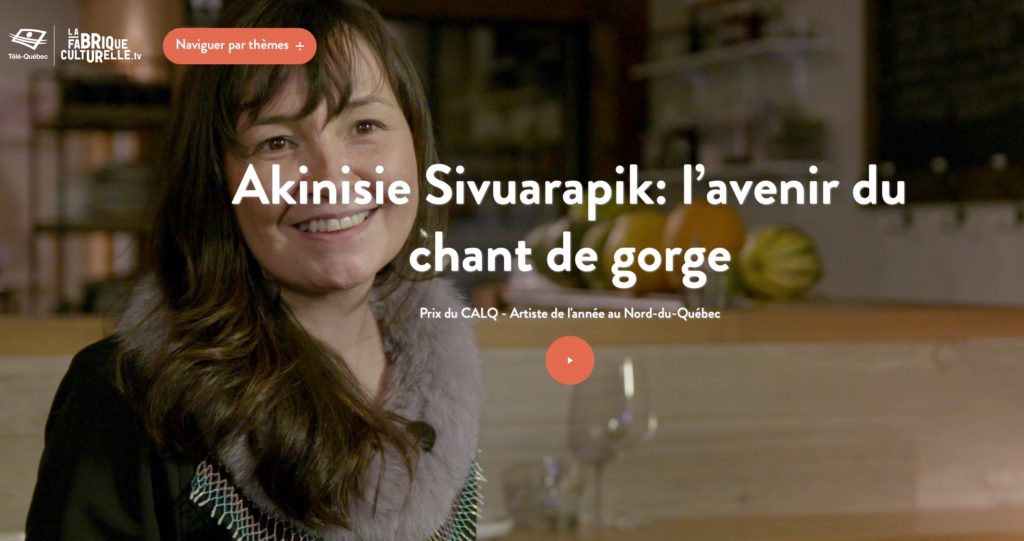ᐊᑭᓂᓯ ᓯᕗᐊᕋᐱᒃ| Akinisie Sivuarapik
ᐊᑭᓂᓯ ᓯᕗᐊᕌᐱᒃ ᓵᓚᖃᕋᑖᓚᐅᔪᖅ ᑯᐯᑉ ᑕᕐᕋᖓᓂᒥᐅᖑᑦᓱᓂ ᑕᑯᒥᓇᕐᑐᓕᐅᕐᓂᒥᒃ ᓵᓚᖃᐅᑎᖃᕐᓱᓂ ᑯᐯᒻᒥ ᑕᑯᒥᓇᕐᑐᓕᐅᕐᓂᒥᒃ ᐊᓪᓚᓯᒪᔪᓕᐅᕐᓂᒥᓪᓗ ᑲᑎᖕᖓᔨᓂᑦ ᑲᑕᑦᔭᑎᐅᓂᕐᒥᓄᑦ ᓵᓚᖃᕈᑎᖃᕐᓱᓂ ᐊᒻᒪᓗ ᐱᕐᖁᓯᑐᖃᕐᒥᒃ ᑲᔪᓯᑎᑦᓯᓂᕐᒥᓄᑦ ᐃᓕᓐᓂᐊᑎᑦᓯᒍᑎᒋᕙᑦᓱᒍᓗ ᓄᑲᕐᓯᓂᒃ. ᐃᓅᓕᕐᑐᕕᓂᖅ ᐱᕈᕐᓴᓱᓂᓗ ᐳᕕᕐᓂᑐᒥ, ᑲᑕᑦᔭᕆᐊᒥᒃ ᐃᓕᑦᓯᓯᒪᔪᖅ ᐊᓈᓇᑦᓯᐊᒥᓂᑦ ᒥᐊᔨ ᓯᕗᐊᕌᐱᒻᒥᑦ ᐃᓕᓐᓂᐊᑎᑦᓯᖃᑎᐅᖃᑦᑕᑎᓪᓗᒍ ᐃᓄᑐᖃᕐᓄᑦ ᐃᓚᐅᖃᑦᑕᓱᓂ. ᐅᖃᓚᐅᔪᖅ ᐊᓈᓇᑦᓯᐊᖓ ᐃᓕᓐᓂᐊᑎᑦᓯᓚᖓᓯᑐᐊᕐᒪᑦ ᓄᑲᕇᒃ ᐃᔨᕐᓯᒪᓲᕕᓂᐅᓂᕋᕐᓱᓂ ᐃᓕᓐᓂᐊᑎᑕᐅᔪᓃᒍᒪᒐᑎᒃ. ᑭᓯᐊᓂ ᐊᓈᓇᑦᓯᐊᒥᓄᑦ ᓇᕝᕚᑕᐅᖃᑦᑕᓯᒪᔫᒃ ᐊᑭᓂᓯᒥᓪᓗ ᐃᓚᐅᑎᑦᓯᓯᐊᖏᓐᓇᓕᒫᕐᓱᓂ. ᑲᒃᑲᓛᖑᑦᓱᓂ ᐃᓱᒫᓗᖃᑦᑕᓯᒪᔪᖅ ᑲᒃᑲᓛᖑᖃᑎᒥᓄᑦ ᓵᓚᕐᖃᖑᓂᐊᖕᖑᓱᓂ ᑕᐸᓗᕋᐅᑎᐅᓂᐊᖕᖒᓱᓂᓗ, ᑌᑦᓱᒪᓂ ᐃᓕᓐᓂᐊᑎᑕᐅᖃᑦᑕᑎᓪᓗᒋᑦ ᑲᖐᒋᔭᐅᓪᓗᐊᓚᐅᔪᖕᖏᒪᑦ ᐊᑯᓂᓂᑖᓘᔪᕆᔭᐅᑦᓱᓂᓗ ᑲᑕᑦᔭᓂᖅ.
“ᐱᕈᕐᓴᓱᖓ, ᑐᑭᓯᓯᒪᕗᖓ ᐱᕐᖁᓯᑐᖃᑦᑎᓂᒃ ᐃᓕᓐᓂᐊᑎᑕᐅᒋᐊᒥᒃ ᑲᔪᓯᑎᑦᓯᐊᕆᐊᓕᑦᑎᓂᒃ ᐅᐱᒍᓱᓪᓚᕆᑦᑐᖓ ᐊᓈᓇᑦᓯᐊᕋᓄᑦ ᐊᔪᐃᓐᓇᑕᐅᖃᑦᑕᓯᒪᒐᒪ ᑭᖑᕚᑦᑎᓄᑦ ᑐᓂᒍᓐᓇᓛᕋᑦᑎᒍ, ᒫᓐᓇ ᐊᓕᐊᓇᕐᓂᐹᑦᓯᐊᖑᓕᕐᒥᔪᖅ ᐊᑑᑎᒋᐊᖓ” ᐅᖃᕐᓱᓂ. ᐁᓴ ᖁᐱᕐᕈᐊᓗᒃ, ᓯᕗᓪᓕᐹᖑᑦᓱᓂ ᐃᓄᑐᐃᓐᓇᐅᓱᓂ ᐊᔪᕿᕐᑐᐃᔨᐅᓯᒪᔪᖅ ᐳᕕᕐᓂᑐᒥᐅᖑᑦᓱᓂ ᑕᒪᑐᒥᖓ ᐱᕐᖁᓯᑐᖃᕐᒥᒃ ᐅᑎᕐᑎᑕᐅᖁᔨᓯᒪᒻᒪᑦ ᓯᕗᓪᓕᖏᑦ ᐊᔪᕿᕐᑐᐃᔨᐅᖃᑦᑕᓚᐅᔪᑦ ᐊᑑᑎᔭᐅᖁᔨᖃᑦᑕᓯᒪᑎᓐᓇᒋᑦ ᐊᖓᒃᑯᒐᓱᐊᕐᓂᐅᔪᕆᑦᓯᓱᑎᒃ, ᐊᓯᑦᔨᒋᐊᖓᓂᒃ ᐃᑉᐱᒋᓯᒪᔭᖓ. ᒫᓐᓇ ᐊᓕᐊᒋᔭᐅᔪᒻᒪᕆᐅᓕᕐᑐᖅ ᐃᓄᑐᐃᓐᓀᑦ ᓄᓇᓕᖏᓐᓂ ᑭᓇᓕᒫᑦᓯᐊᑯᓐᓄᓗ ᐃᓕᓐᓂᐊᑕᐅᒍᒪᓲᖑᓕᕐᓱᓂ.
ᐅᐱᒍᓱᑉᐳᖓ ᐃᓕᑦᓯᓯᒪᒐᒃᑯ ᐊᐅᓪᓚᑲᑕᒍᑎᒋᓲᕆᓕᕐᓱᒍᓗ ᑲᓇᑕᐅᑉ ᓯᓚᑖᓄᑦ ᓯᓚᕐᔪᐊᓕᒫᒥ ᑲᑕᑦᔭᕆᐊᕐᑐᓲᖑᒐᒥ, ᐅᑎᕐᖃᒥᓚᐅᕐᒥᔪᑦ ᒍᐃᒍᐃᕐᔪᐊᑦ ᓄᓇᖓᓐᓂᑦ ᑲᑕᑦᔭᕆᐊᕐᑐᓯᒪᔪᕕᓂᐅᑦᓱᓂ. “ᐃᓗᕐᖁᓯᑦᑎᓂᒃ ᑕᑯᔭᐅᑎᑦᓯᒋᐊᖃᕐᓂᕗᑦ ᐱᒻᒪᕆᐅᔪᖅ, ᖃᐅᔨᒪᔭᐅᓂᐊᕐᒪᑦ ᐊᓯᖏᓐᓂᓗ ᐃᓗᕐᖁᓯᕆᔭᐅᔪᓂᒃ ᐃᓕᓐᓂᐊᕆᐊᒥᒃ ᐊᓕᐊᓇᕐᑑᓱᓂ, ᐊᓕᐊᒋᓲᕋ ᓯᓚᕐᔪᐊᒥ ᐊᕐᕕᑕᕆᐊᒥᒃ. ᐅᐱᒍᓱᓪᓚᕆᑦᓱᖓᓗ ᑕᒪᑐᒥᖓ ᐊᑑᑎᒍᓐᓇᕋᒪ”.
Akinisie Sivuarapik a récemment remporté le prix de l’Artiste Nord-du-Québec de l’année du Conseil des arts et des lettres du Québec pour son expertise en chant de gorge, et son rôle dans le maintien de la tradition et de son enseignement à la nouvelle génération. Née et élevée à Puvirnituq, Akinisie a appris le chant de gorge dès son enfance grâce aux ateliers que sa grand-mère, Mary Sivuaraapik, a créé avec d’autres aînés de sa communauté. Elle a confié que lorsqu’il était temps d’assister à l’atelier de chant de gorge, Akinisie, ses soeurs et ses cousines avaient l’habitude de se cacher de sa grand-mère afin de ne pas participer aux ateliers. Mais sa grand-mère la trouvait toujours et s’assurait qu’elle y participait. Car à cette époque, cela était considéré comme vieillot et démodé, elle craindrait d’être intimidée et moquée lorsqu’elle était enfant.
“En grandissant, j’ai appris qu’elles nous enseignaient à garder vivante une culture très importante et je suis très fière que ma grand-mère nous ait forcées à apprendre cette tradition afin que nous puissions la transmettre à la génération suivante. Alors maintenant c’est la chose la plus cool à faire », dit-elle. Ce changement s’est opéré depuis qu’Aisa Koperqualuk, le premier prêtre inuk vivant à Puvirnituq qui a ravivé le chant de gorge, a cessé de le considérer comme tabou à l’inverse de ses prédécesseurs qui croyaient que c’était une pratique chamanique. Maintenant c’est une pratique populaire et acceptée dans les communautés inuit par des personnes de tous âges et désireuses d’apprendre.
Elle est reconnaissante d’avoir pu apprendre le chant de gorge et que cela lui a permis de se produire au Canada et à l’étranger. Elle revient tout juste du Festival International des Musiques d’Aujourd’hui à Strasbourg, en France. « Je pense qu’il est très important de partager notre culture avec le monde afin qu’elle puisse être connue, et apprendre d’autres cultures est très intéressant. Je trouve toujours intéressant de voir d’autres parties du monde. Je suis très fière de pouvoir le faire.”
Depuis qu’elle a reçu le prix, de nombreuses écoles du Nunavik lui ont demandé de venir donner des ateliers, ce qu’elle fait avec enthousiasme. Elle encourage les communautés du territoire inuit à faire les démarches pour avoir des ateliers afin que tous les Inuit puissent avoir la possibilité de perpétuer cette pratique. Pour souligner la reconnaissance qui accompagne le prix, La Fabrique Culturelle (Télé-Québec) réalise également un court métrage sur elle.
Akinisie Sivuarapik has recently won the Nord-du-Québec Artist of the Year prize from the Conseil des arts et des lettres du Québec for her throat singing expertise, and her role in keeping the tradition alive and teaching it to the new generation. Born and raised in Puvirnituq, Akinisie learned throat singing as a child from the workshops her grandmother Mary Sivuaraapik started along with other elders from her community. She shared that, when it was time to attend the throat singing workshop, Akinisie and her siblings used to hide from her grandmother in order to not participate in the workshops. But her grandmother always found her and made sure she was always taking part. During those years throat singing was considered old and not trendy, and she was afraid to be bullied and mocked while she was a child.
“As I grew up, I learned that they were teaching us to keep alive culture and I’m very proud that my grandmother had forced us to learn this tradition so we can pass it on to the next generation. So now it’s the coolest thing to do” she says. This change has taken place since Aisa Koperqualuk, the first Inuk priest living in Puvirnituq who brought back throat singing, stopped considering it a taboo unlike his predecessors who believed it was a shamanic practice. Now it is popular and accepted among Inuit communities with people from all ages wanting to learn.
She feels grateful that she got to learn throat singing and that it allowed her perform within Canada and internationally. She is just coming back from the Festival International des Musiques d’Aujourd’hui, in Strasbourg, France. “I think it’s very important to share our culture to the world so it can be known, and learning other cultures is very interesting. I always find it interesting to see other parts of the world. I am very proud I get to do that”.
Since she received the prize, many schools in Nunavik requested her to come and give workshops which she is very excited to do. She encourages communities from Inuit territory to reach out and request workshops so all Inuit can have the opportunity to keep the practice alive. To underline the recognition coming with the prize, La Fabrique Culturelle (Télé-Québec) is also producing a short film about her.
ᐊᓪᓚᑐᖅ | Texte de | Text by: Olivia Lya Thomassie
